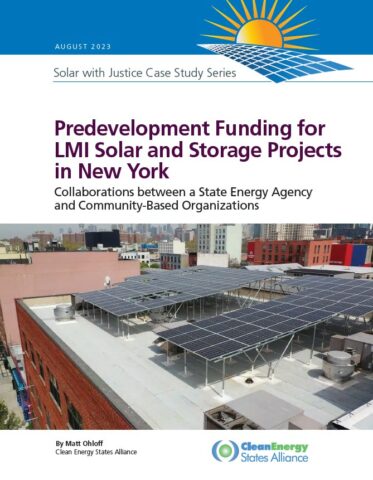Predevelopment Funding for LMI Solar and Storage Projects: A Case Study from New York
Matt Ohloff | Clean Energy States Alliance
A thorough predevelopment process for a potential solar or solar+storage project is essential to deciding whether the project can and should move forward. Predevelopment includes site identification, financial modeling, estimating equipment and installer expenses, customer outreach and enrollment, and other details about the scope of the project. This process can be expensive, and many for-profit solar developers only invest money into predevelopment when they already believe a project is likely to be able to move forward. Financing for predevelopment costs is usually not available to community-based organizations working to develop solar or solar+storage to benefit low-and-moderate income (LMI) residents because these projects are considered risky by many commercial financing institutions.
The New York State Energy Research and Development Authority’s (NYSERDA) Affordable Solar and Storage Predevelopment and Technical Assistance program is successfully addressing the predevelopment challenge for LMI solar and storage projects. This case study profiles this program and two community-based organizations (CBOs) that have successfully applied and received funding through the program. This program can serve as a model for predevelopment support programs in other states.
This case study was developed as part of the Clean Energy States Alliance’s (CESA) Solar with Justice: Connecting States and Communities project. The Solar with Justice project aims to bring together state energy agencies (SEAs) and community-based organizations (CBOs) developing solar for environmental justice communities to create opportunities for dialogue and collaboration. This case study is the fourth of six case studies that will be published by CESA under the Solar with Justice project, highlighting models of collaboration between CBOs and SEAs on solar for environmental justice communities.
This case study is based upon work supported by the U.S. Department of Energy’s Office of Energy Efficiency and Renewable Energy (EERE) under the Solar Energy Technologies Office Award Number DE-EE0009360.
Associated Project(s):
Resource Details:
Date: August 22, 2023
Type: Report
Topic(s): Energy Storage, Finance, Low- and Moderate-Income Clean Energy, Solar PV

